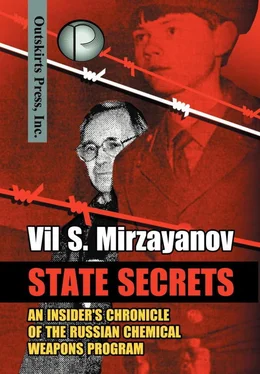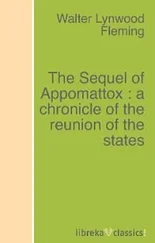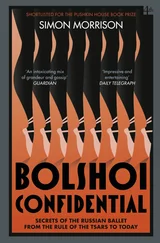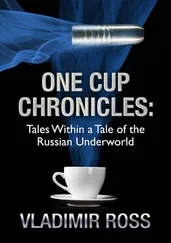At that time though, I was really surprised that the name Drozd was not listed among the members of this commission, who signed the report. He was one of the key figures on this commission. Later I found that he categorically refused to sign this document.
As Drozd was making headway in the development of a new version of Novichok , he became embroiled in a scandal involving improper collaboration with the Syrian government. In 1992, Russian Deputy Prime Minister Vladimir F. Shumeiko and Syrian President Hafez Assad signed a memorandum pledging cooperation to create a “Center for Environmental Protection”. Lieutenant General Anatoly Kuntsevich, the scientific deputy in the Directorate of the Chief of the Chemical Troops, used this agreement as a cover to help the Syrians with their chemical weapons program. Russian President Boris Yeltsin later appointed Kuntsevich to be his point man on chemical and biological disarmament matters, a job that came with the odd title of “Assistant on the Conventional Problems of Chemical and Biological Weapons”. Kuntsevich was well known as a heavy drinker and a man who was looking for any monetary advantage he could find as Russia’s economy hit rock bottom in the early 1990s. The Syrians reportedly asked Russia for certain equipment for an “environmental chemistry laboratory,” such as laboratory hoods, compressors, and vacuum machines as well as scientific information about nerve agents.
At Kuntsevich’s request, Drozd was defining the physico-chemical characteristics of soman and sarin so that this data could be shared with the Syrians. This activity would have brought in badly needed funds for GOSNIIOKhT, if not for Drozd himself. Victor Polyakov, Petrunin’s first deputy, pulled the plug on this illicit collaboration by accusing Drozd of stashing a few hundred kilograms of dichloranhydride of methylphosphonic acid, a key precursor for sarin, soman, and Substance 33 that is prohibited from export, amidst boxes of equipment bound for Syria. Even Drozd’s former wife, who was a pilot plant engineer, told the KGB he was culpable.
I know that equipment was being shipped, but I do not know whether Drozd was involved in smuggling this key precursor chemical. Anyone could have dipped into the unguarded tank car that usually sat on the grounds of GOSNIIOKhT. It contained several tons of dichloranhydride of methylphosphonic acid, made at Shikhany. As a result of the investigation, GOSNIIOKhT fired Drozd in 1993 and Kuntsevich got the axe in 1994, for “mismanagement.” [33] According to Kremlin spokesman Alexander Orofyonov, Kuntsevich was fired because of “a single grievous violation of his work responsibilities.” Alexander Gordeyev, “Yeltsin Fires Top Chemical Weapons Official,” The Moscow Times , 8 April 1994.
In 2001, the Russian authorities dropped all these allegations because of lack of evidence.
Another remarkable scientist from GOSNIIOKhT was Professor Andrei Tomilov. His laboratory was working with the electro-synthesis of organic compounds. In addition to the technological process for manufacturing pinacolyl alcohol, which is a necessary precursor for soman production, Tomilov successfully developed the original methods for producing tetraethyl lead, adipodinitrile, and others. Tomilov was awarded with the Lenin prize for his work on pinacolyl alcohol. [34] See ref. 56.
My group worked with this laboratory for a long time, developing different GC analytical methods for them. Tomilov is one of those talented people, fanatically devoted to science. When I met him, I had the impression that he was hardly interested in anything that did not directly concern his research. Kind and well disposed to everyone, he was always ready to help anyone who wanted to contribute to the field of science. Tomilov had always sympathized with me, and I am still grateful to him for his friendly support in helping me prepare and defend my doctoral thesis.
The GOSNIIOKhT directorate always regarded him as some kind of an alien body, mean-spiritedly victimizing him in every possible situation. It seemed that all these little jabs didn’t even touch Tomilov, and he continued his research as if nothing had happened, and was the productive author of numerous monographs and textbooks on the problems of the electrochemical synthesis of organic compounds.
It is not surprising that when it became necessary, Andrei Petrovich created an original method for the electrochemical synthesis of highly pure arsenic from arsenic oxides, the products of the alkaline hydrolysis of lewisite.
A New Class of Chemical Agents “Novichok” and Binary Weapons
From 1971 to 1973, Petr Kirpichev, a senior scientist from the Shikhany branch of GOSNIIOKhT, and his assistants developed a new class of chemical agents which later became known as Novichok agents, and all problems connected with them received this codename. The word “Novichok” translates as “newcomer”. At first, Substance A-230 was synthesized and tested, which stands for
F
/
CH 3-P=O
\
N=C(CH 3)-N(C 2H 5) 2
or N-2-diethylaminomethylacetoamidido-methylphosphonofluoridate (Codename A-230 or Substance 84). For the first time, the acetoamydin-radical (C 2H 5) 2N-C(CH 3)=N- (creating P-N–bound) was introduced into the molecular skeleton of sarin or soman, instead of the O-alkyl radical. This was fantastic from standpoint of military chemists, because the toxicity of the new substance was up to 5-8 times higher than was the toxicity of Substance 33. The result depended on whether the skin-resorptive or the intravenous test was used.
According to senior engineer Vladimir Uglev, who was the assistant of Kirpichev, the long time military chemists in Military Unit 61469 didn’t believe it. They only started to take this agent more seriously when they conducted their own laboratory tests with animals. Old jealousies didn’t allow them to recognize the importance of this discovery. However, Director Ivan Martynov immediately sensed the perspectives of this agent and took measures to support Kirpichev’s work, showing his personal interest. With his persistency he prompted the Central Committee of CPSU to take a decision to promote such agents. [35] Resolution of Central Committee of the CPSU and Council of Ministers of USSR from April 24 1977 N 3509-123. See Annex 21.
A group of scientists of Shikhany branch of GOSNIIOKhT. Shikhany, 1978. First from the right is Petr Kirpichev. Victor Petrunin is the third from the right.
GOSNIIOKhT’s Shikhany scientists, 1974.
Standing from left:
Vladimir Vasiliev, Sergey Sedov and Sergey Koshelev.
Sitting from left:
Yuri Rink, Valerij Djuzhev-Maltsev and Victor Petrunin.
This work was granted top priority and a few people were given clearance to become familiarized with it. This of course didn’t stop the military specialists from trying in every possible way to compromise it or break it. Things became more complicated in the winter of 1977 when they found that this agent was crystallizing in containers at temperatures below -10 Celsius. The problem was solved by adding some N,N-dimethylformamid to the pure agent. Even though this agent was diluted a bit by this solvent, its toxicity was extremely high, and GOSNIIOKhT tried to push it through the standard military field tests, with the goals of developing the technology of its production and getting it formally accepted as a chemical agent of Soviet Army.
Petr Kirpichev’s group then synthesized and tested analogs of agent A-230:
Читать дальше












